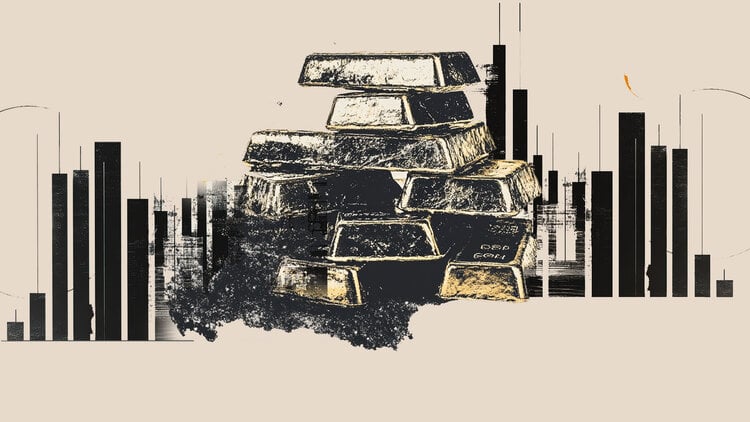- Gold price rallies more than 2% on Monday with nervousness towards the Fed interest-rate decision.
- Geopolitical risks coming from Trump and Israel are pushing investors back into Gold.
- Upside risks persist and are squeezing out short sellers of the precious metal.
Gold (XAU/USD) rises by more than 2% on Monday to $3,317 at the time of writing, as geopolitical risk surges. The Houthi attack that hit Ben Gurion airport this weekend and Israel’s promise to retaliate while preparing for a broad ground offensive in Gaza are elevating risks again in the region. Meanwhile, US President Donald Trump said that military action might be an option to consider for the US to seize control of Greenland.
Gold’s appeal increases as traders brace for the Federal Reserve’s rate decision on May 7. Over the weekend, Trump expressed his dislike again of the Fed and its Chairman Jerome Powell. After calling Powell “stiff”, the US President called upon the Federal Open Market Committee (FOMC) members to pressure Chairman Powell to deliver rate cuts.
According to the Chicago Mercantile Exchange (CME) Fedwatch tool, no rate cut is foreseen for this Wednesday. Given the recent Nonfarm Payrolls print and the latest string of data from sectors such as Manufacturing and Services, the US economy is starting to ease, but is not crashing. This could be ammunition for Fed Chairman Powell to push against the political pressure and channel to markets that rates will stay steady for longer until the Fed is comfortable enough to lower them..
Daily digest market movers: Rate cut bets pared back
- Several Asian markets are closed for a public holiday on Monday. The United Kingdom is closed as well.
- In the Gold mining sector, some takeover news with Gold Road Resources agreeing to be bought for $3.7 billion after South African suitor Gold Fields sweetened its offer, concluding a public spat between the joint venture partners, Financial Review reports.
- The CME FedWatch tool shows the chance of an interest rate cut by the Federal Reserve in May’s meeting stands at 5.2% against a 94.6% probability of no change. The June meeting sees a 46.6% chance of a rate cut.
Gold Price Technical Analysis: Kick in the nuts
Bullion is sprinting higher on Monday, while the Greenback dipped lower at the start of the trading day. The communication vessels synergy between the two assets comes just a few days ahead of the Fed rate decision. Generally, steady or higher rates are bad for Gold as the returns from interests in bonds are more attractive than the return from Gold. However, there might be a breakout in that narrative: if rates remain elevated at current levels, the US economy could weaken further, contract and trigger stagflation or recession, and Gold is a better positioned hedge to withstand that scenario.
On the upside, the R1 resistance at $3,265 has already been broken in a topside test in early trading this Monday. Should some follow-through come, the R2 at $3,337 might be a bit too far off. Rather look for $3,290 (May 1 high) and $3,320 (April 30 high) as intermediary levels nearby for upside resistance.
On the downside, pivot at $3,244 together with the technical level at $3,245 should do the trick and hold. In case Bullion dips further, very close supports are present near $3,219 S1 intraday support and $3,197 S2 intraday support for Monday.

XAU/USD: Daily Chart
Tariffs FAQs
Tariffs are customs duties levied on certain merchandise imports or a category of products. Tariffs are designed to help local producers and manufacturers be more competitive in the market by providing a price advantage over similar goods that can be imported. Tariffs are widely used as tools of protectionism, along with trade barriers and import quotas.
Although tariffs and taxes both generate government revenue to fund public goods and services, they have several distinctions. Tariffs are prepaid at the port of entry, while taxes are paid at the time of purchase. Taxes are imposed on individual taxpayers and businesses, while tariffs are paid by importers.
There are two schools of thought among economists regarding the usage of tariffs. While some argue that tariffs are necessary to protect domestic industries and address trade imbalances, others see them as a harmful tool that could potentially drive prices higher over the long term and lead to a damaging trade war by encouraging tit-for-tat tariffs.
During the run-up to the presidential election in November 2024, Donald Trump made it clear that he intends to use tariffs to support the US economy and American producers. In 2024, Mexico, China and Canada accounted for 42% of total US imports. In this period, Mexico stood out as the top exporter with $466.6 billion, according to the US Census Bureau. Hence, Trump wants to focus on these three nations when imposing tariffs. He also plans to use the revenue generated through tariffs to lower personal income taxes.

